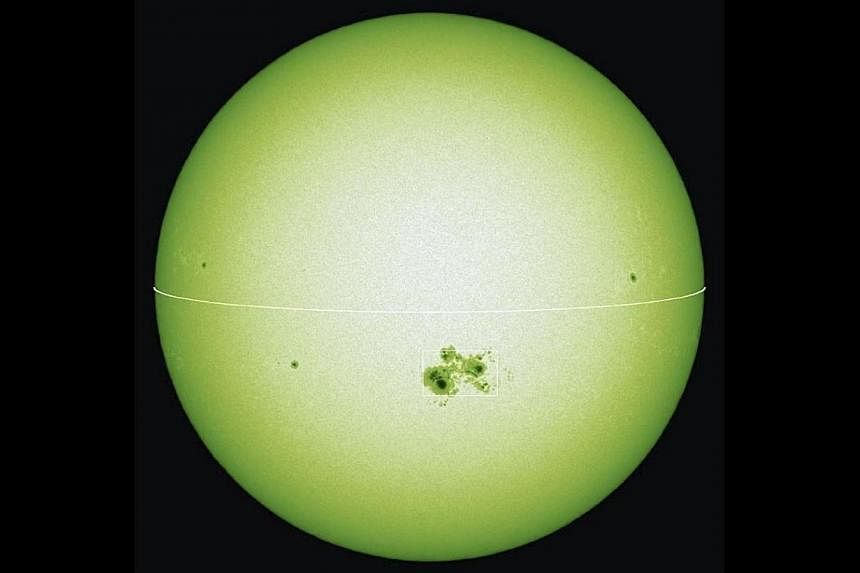TOKYO (THE YOMIURI SHIMBUN\ASIA NEWS NETWORK) - A gigantic sunspot group - 66 times the size of the Earth - has been observed since October, a phenomenon seen for the first time in 24 years, according to the National Astronomical Observatory of Japan (NAOJ).
The sunspot group emerged on the side of the sun's surface facing the Earth in mid-October.
Toward the end of the month, it had grown to about 66 times greater than the globe.
After temporarily moving out of sight as the sun rotated, the phenomenon became visible again on November 13, NAOJ said.
On Wednesday, NAOJ and the Japan Aerospace Exploration Agency (JAEA) unveiled images obtained when the sunspot group developed in October.
Sunspots, which are caused by strong solar magnetic activity, become visible as dark spots due to their reduced surface temperature under the influence of powerful magnetic fields.
The number of sunspots rises and falls in a cycle of about 11 years.
Near the end of 2008, the sun entered what is called the solar maximum, a period in which activity is heightened.
In what is known as a solar flare, a violent explosion occurs around a sunspot.
The phenomenon can cause such disruptions on the Earth as power outages and communications disruptions.
Although six gigantic flares took place in October, no major damage was reported.

